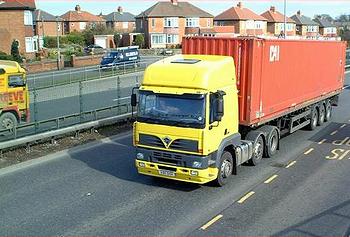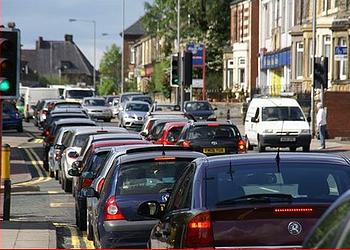
LUXEMBOURG, November 20, 2014 (ENS) – The United Kingdom must clean up illegal levels of air pollution “as soon as possible,” the European Court of Justice ruled Wednesday, in its first decision on the European Union’s 2008 air quality law.
The case was originally brought in the British courts by ClientEarth, a London-based environmental group concerned about the 29,000 people who die early in the UK each year as a result of air pollution.

ClientEarth asked the British courts to require the UK Government to revise its plans to meet the statuatory limits for nitrogen dioxide under the Air Quality Directive as soon as possible, and by January 1, 2015 at the latest.
Diesel exhaust is the main source of nitrogen dioxide (NO2), a gas linked with heart attacks and asthma.
The EU’s 2008 Air Quality Directive is the law that establishes limit values for nitrogen dioxide that must not be exceeded after January 1, 2010.
Hearing the case as final court of appeal, the UK Supreme Court turned to the European Court of Justice for advice, asking whether, if the limit values were not met by January 1, 2010, an EU Member State was required to apply for a postponement of the deadline.
In its ruling, the European Court of Justice sent the case back to the UK Supreme Court with the recommendation that the UK government be ordered to establish “the plan required by the directive to ensure, in particular, that the period during which the limit values are exceeded is as short as possible.”
ClientEarth lawyer Alan Andrews was delighted with the ruling.
“This ruling is a big victory for the millions of people who want to live healthy lives in the UK’s towns and cities,” Andrews said. “This will force the government to finally take this issue seriously and come up with an urgent plan to rid our towns and cities of cancer-causing diesel fumes.”
In the UK the limit values for nitrogen dioxide were exceeded in 2010 in 40 of the 43 zones set up for the purposes of the air quality law.
In September 2011, the UK submitted plans to the European Commission together with applications for the postponement of the deadline for 24 of the 40 zones. The UK predicted that the limit values would be met by January 1, 2015 in those zones.

For 16 zones, including Greater London, the air quality plans projected compliance between 2015 and 2025, but the UK did not request a time extension.
ClientEarth argues that under its current plans the UK will not meet the legal limits for nitrogen dioxide until after 2030 – 20 years after the original deadline.
ClientEarth’s case will return to the UK Supreme Court for a final ruling next year. This should see the UK Supreme Court ordering the government to take action to meet nitrogen dioxide limits in a much shorter timeframe.
This plan would need to drastically cut pollution from diesel vehicles and could lead to policies like the London Mayor Boris Johnson’s plans for an “ultra low emission zone” being rolled out nationally.
London suffers the biggest cluster of pollutant limit breaches in the UK, and the UK is subject to infraction action by the European Commission that could result in fines in the hundreds of millions of pounds.
The London City government estimates that 4,300 people a year in London die prematurely as a result of air pollution.
The Mayor and Transport for London launched a public consultation October 29 on proposals to introduce the world’s first Ultra Low Emission Zone in the capital by September 2020, to improve air quality and in turn the health of Londoners.
This action is strengthened by the opinion of the European Court of Justice in the ClientEarth case.
“This sets a groundbreaking legal precedent in EU law and paves the way for a series of legal challenges across Europe,” said Andrews. “ClientEarth will spearhead these efforts to help people defend their right to clean air in court.”
Copyright Environment News Service (ENS) 2014. All rights reserved.
© 2014, Environment News Service. All rights reserved. Content may be quoted only with proper attribution and a direct link to the original article. Full reproduction is prohibited.
